
At Powerside, we care about Power Quality. We work to address the waveform defects in your AC power caused by assets on your Power System. This article will focus on the causes of Harmonic distortion and its effect on your system. We will also highlight the benefits of adding an Active Harmonic Filter system to your application.
Power Quality Defects: Overview
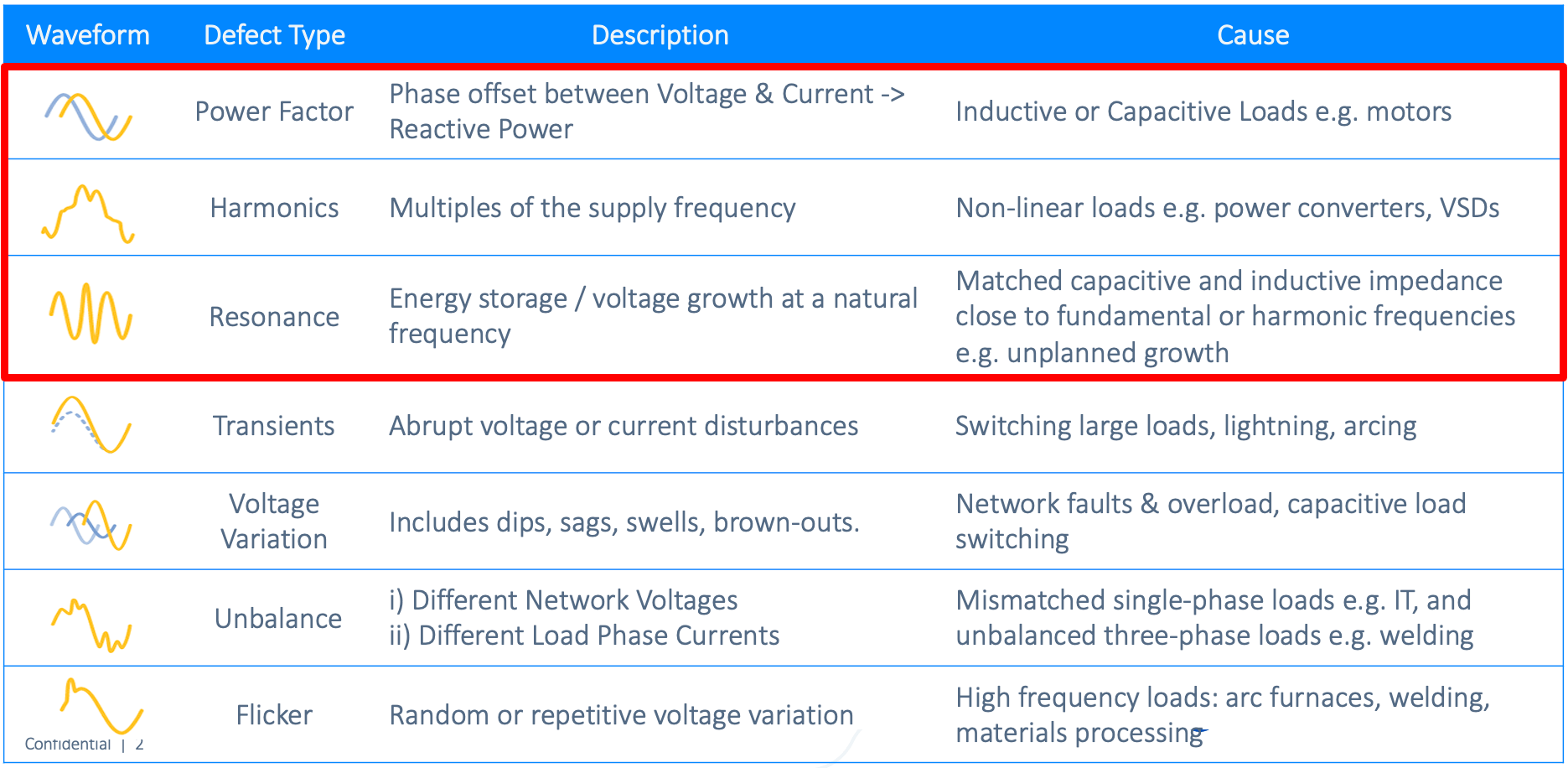
Let’s start with identifying Harmonics
“In an electric power system, a harmonic of a voltage or current waveform is a sinusoidal wave whose frequency is an integer multiple of the fundamental frequency.”
When considering a Transmission and Distribution grid, the large electricity generators control the fundamental frequency. In the USA, this frequency is 60Hz, but in European markets, it could be 50Hz. As such, a 60Hz system could include 2nd-order harmonics at 120Hz, 3rd-order at 180Hz, 5th-order at 300Hz, etc. Combined, they deliver an overall distortion to the waveform at its fundamental frequency.
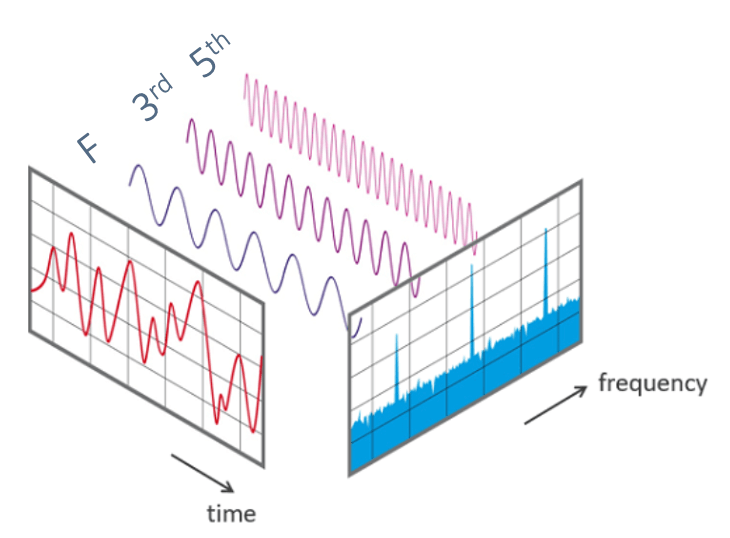
Causes
Nonlinear loads produce harmonic frequencies with rapid switching, such as frequency-controlled drives (VFDs), variable speed drives (VSDs), rectifiers, LED lighting, or saturated electrical machines like welding equipment.

Effects
As more power electronic harmonic generators are integrated into our electrical distribution network (also referred to as Industry 4.0), electrical systems will see more damaging harmonics.
Harmonics can have serious consequences. If harmonics damage a sensitive device such as an electronic control system, total production failure may result. The supply grid can experience interference or dangerous overloading due to reactive power, imbalances, voltage fluctuation (flicker), and high harmonic current impacts.
Harmonics: Impacts & Consequences
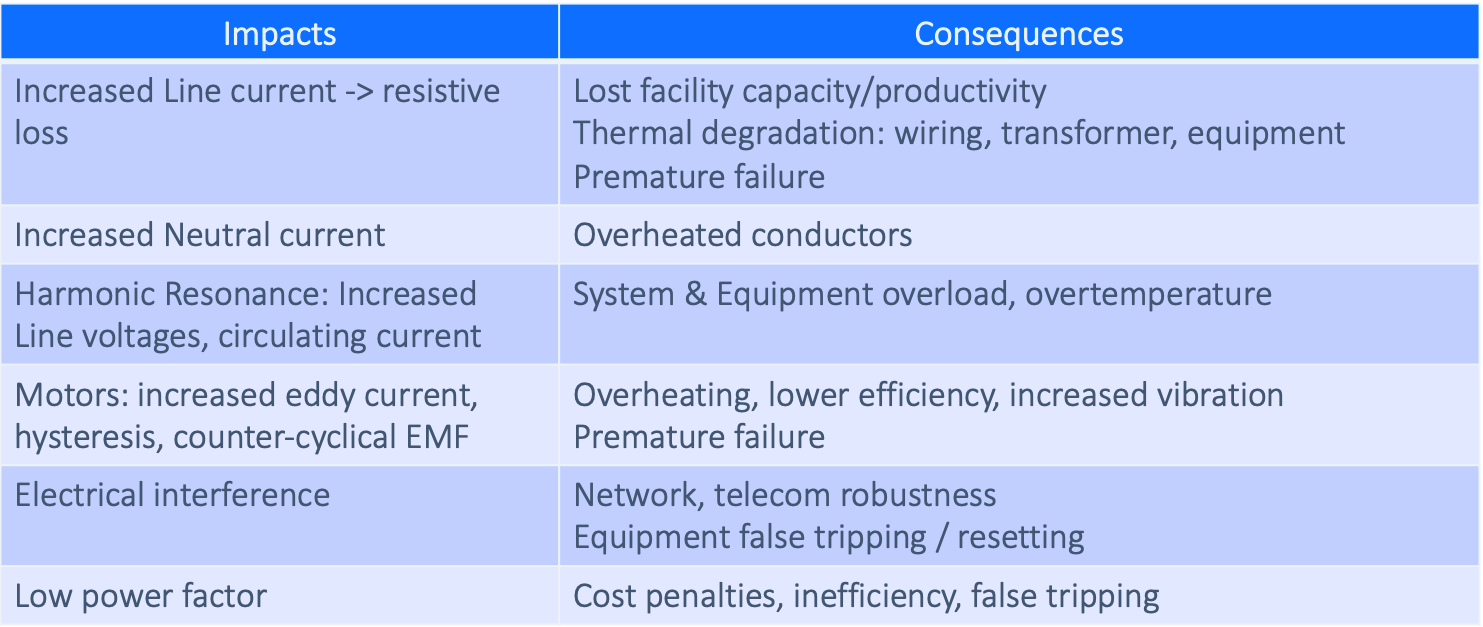
Solutions
The most common solution to reduce harmful harmonics is to filter them out by injecting opposing harmonics into the system. This filtering method injects harmonic currents at a 180-degree phase shift to cancel out the harmonics. A good analogy would be Noise Cancelling Headphones that listen for external noise and emit the opposite signal to neutralize the sound.
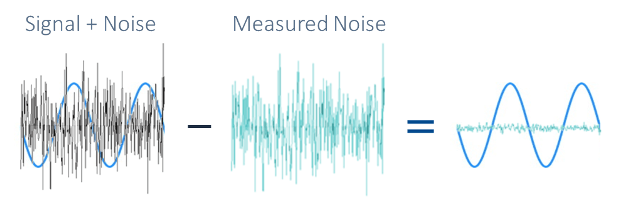
Harmonic filters can have active or passive filters. Active filters adapt to changing harmonic influence and simultaneously filter out several harmonic frequencies. On the other hand, passive filters are larger, limited in the frequency range, consist of multiple stages, and are not self-adapting.
The design of harmonic filters is either series filters or parallel (shunt) filters. Shunt Active Harmonic filters measure the current and voltage of a grid section and supply precisely the amount of current for the desired effect, taking the strain off the grid, extending the service life of devices, and increasing the safety of industrial systems.
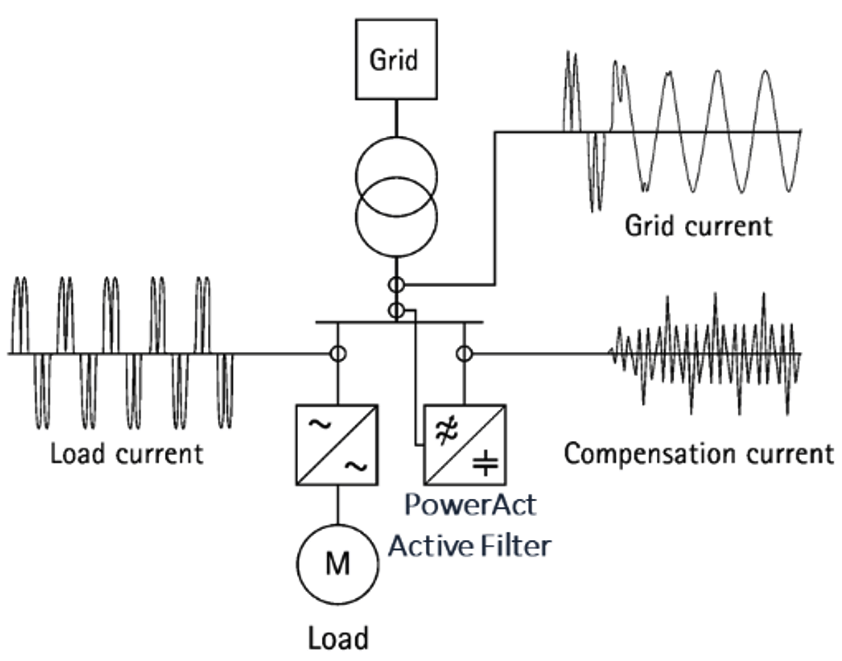
Additional Benefits of Shunt Active Harmonic Filters
The pairing of cycle-by-cycle response time and correction of harmonic voltage and currents bring additional benefits, including:
- Load Balancing
- Reactive power compensation
- Anti-resonance
- Flicker Correction
- A mix of all these features can be used simultaneously
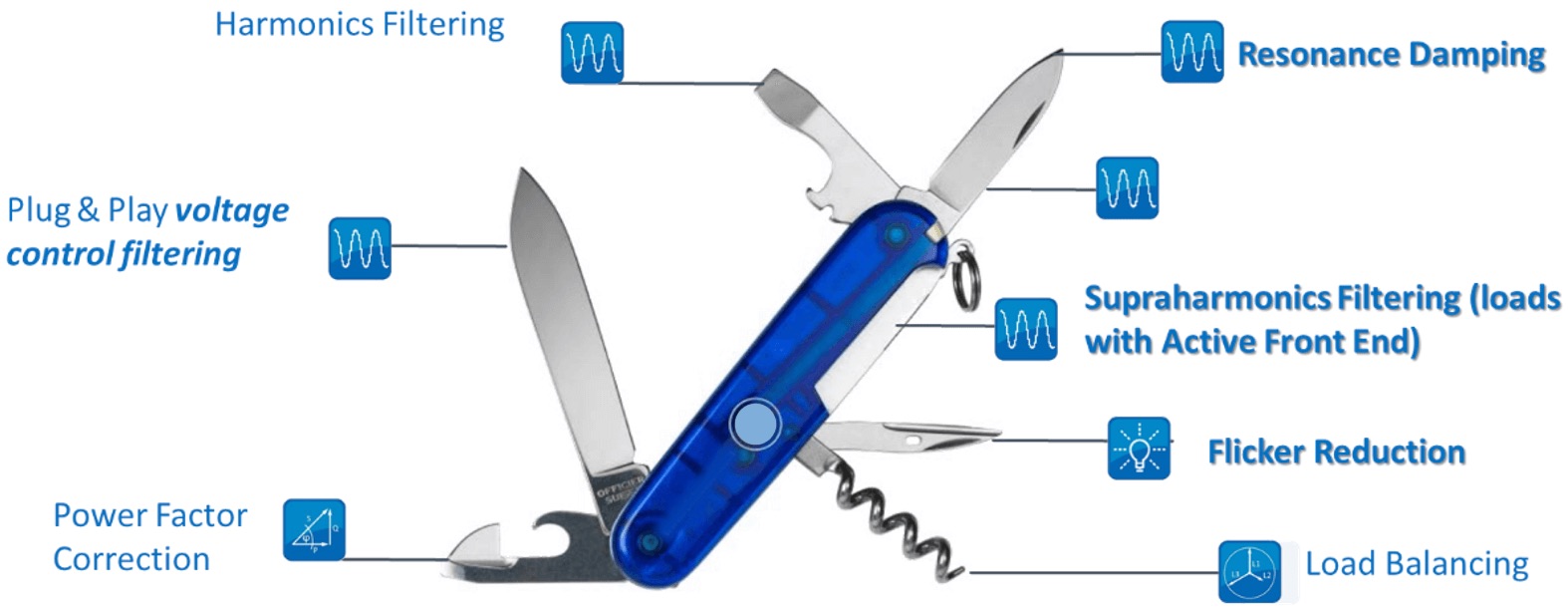
Applications for Shunt Active Filters
Poor Power Quality within a facility can have a significant economic impact regarding reliability, efficiency, and operating cost. A critical area that comes into focus is the interconnection between the supplier of power and the consumer – often referred to as the point of common coupling (PCC).
Utility providers are increasingly implementing more innovative technology to monitor customer loads and to enforce their Compliance Standard for the PCC, which in North America is commonly IEEE 519. The Standards established by most networks include limits on individual Harmonic orders as well as total Harmonic distortion limits for Voltage and Current (5% VTHD and 8% ITHD typically).
Some key offenders generating non-conforming Harmonics include:
- Non-linear load sources
- VFD’s
- 6-pulse generating high 5th 7th 11th 13th harmonics
- 12-pulse generating high 11th 13th 17th 19th harmonics
- DC Drives
- Switch mode power supplies/rectifiers
- VFD’s
Powerside PowerAct Shunt Active Harmonic Filters – why settle for less?
PowerAct is designed for your market and boasts the following key product advantages:
- 600V direct connection design sets it apart from the competition with sub-480V designs
- The system can operate with CT inputs or sensorless (using voltage control mode)
- Medium Voltage correction is possible through transformers to a Low Voltage Bus
- Field Expandable units with an efficient modular concept, parallel as many as necessary
- Easy installation and commissioning
- Up to 51st harmonic cancellation programmable via our intuitive HMI
- 1ms response time
- NEMA 3R design available for outdoor applications
- Application engineering and system simulation/modeling via our skilled in-house Application Engineering Department
- Up to 750amps of filtering capacity in a single cabinet
- Wall mount units are available
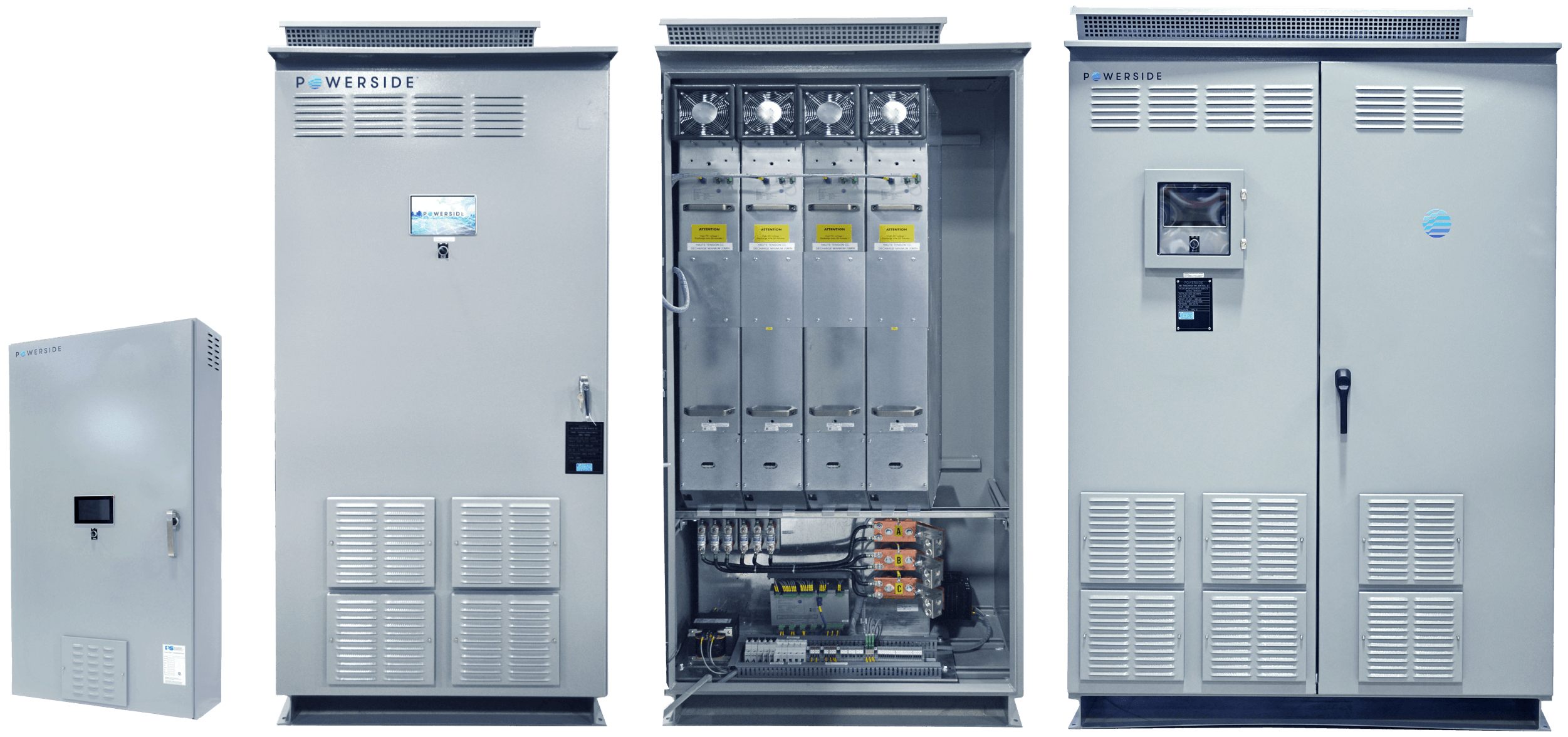
Powerside’s industry-leading Active Harmonic Filter can help improve your power system’s reliability, decreasing downtime, and unexpected equipment failure. It also brings additional cost savings by increasing system capacity, which improves Power Factor and phase imbalance.
Check out our Power Systems Analysis program to discover your harmonic profile and Power Factor.
Contact Us
United States
980 Atlantic Ave
Alameda (CA) 94501
1-888-736-4347
Canada
7850 Trans-Canada Highway
Saint-Laurent (QC) H4T 1A5
1-877-333-8392